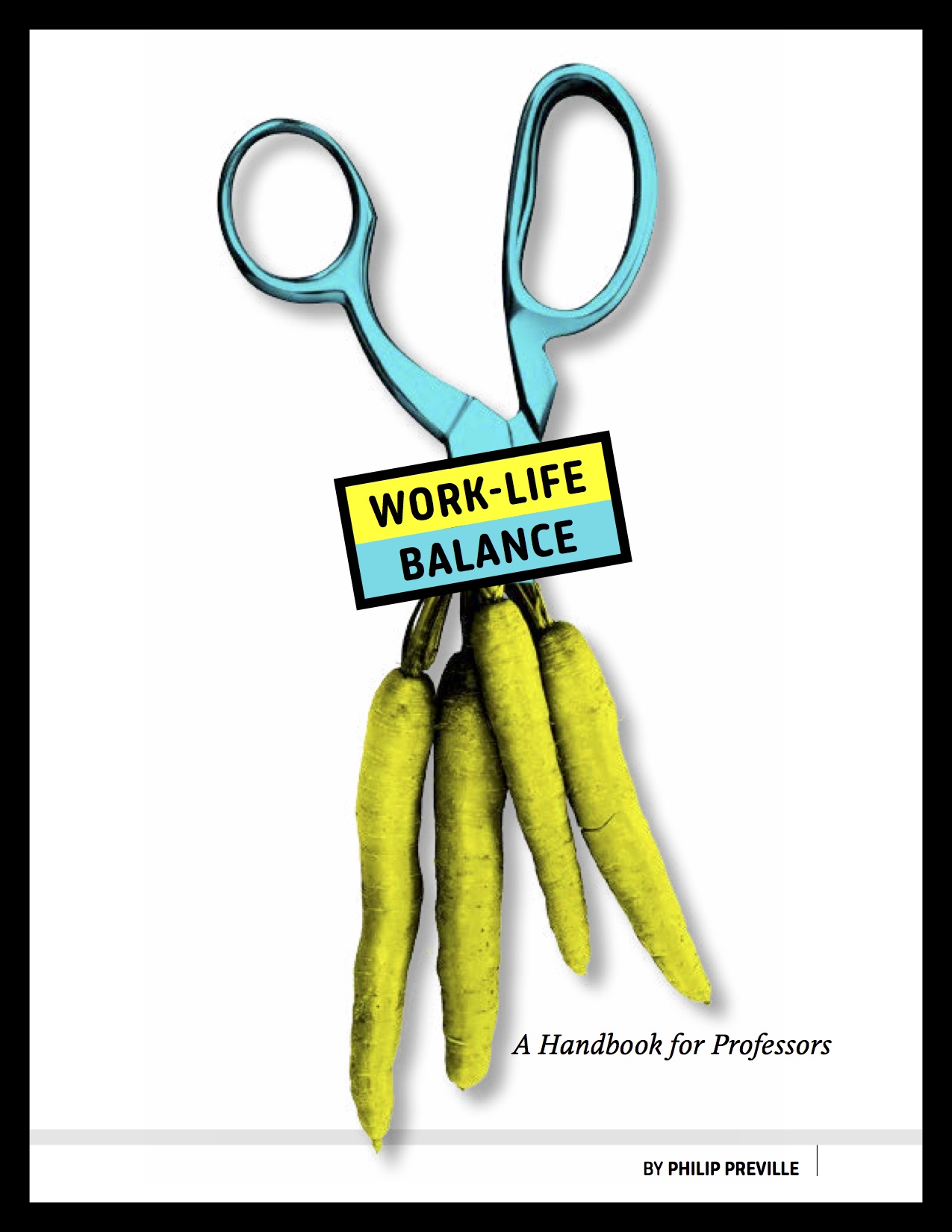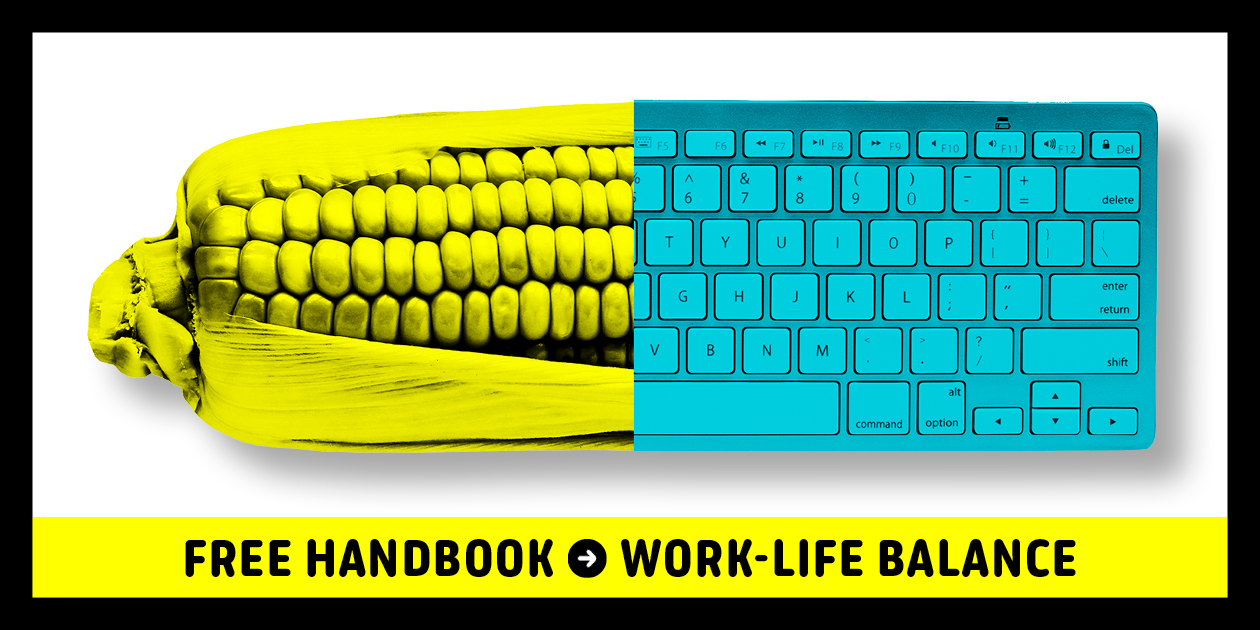Faced with shifting demographics, elevated expectations and the challenge of mastering new technologies, faculty are struggling to balance their career demands with their personal lives—leading to widespread burnout.
This guide discusses the main sources of academic stress and lack of job satisfaction, and proposes some practical rules you can implement in your academic and personal life.
Contents
1. Overwhelm in the Faculty Lounge
2. The Root Causes of Imbalance
3. The Double-Edged Sword of Flexibility
4. Find Harmony in Four Easy Steps
1. Overwhelm in the Faculty Lounge
It’s a sign of the times that the hottest book on university campuses right now isn’t a ground-breaking piece of research like Thomas Piketty’s Capital, or a work of cultural criticism such as Roxane Gay’s Bad Feminist, but a tiny 100-pager about campus life titled The Slow Professor.
Co-written by two Canadian literary scholars, Maggie Berg of Queen’s University and Barbara Seeber of Brock University, The Slow Professor is a hybrid research review, self-help handbook and surprisingly provocative resistance manifesto. The book is an antidote to what the authors describe as “the beleaguered, managed, frantic, stressed and demoralized professor who is the product of the corporatization of higher education.” Their assessment has clearly struck a chord: the book has been through more than six print runs since its initial 2016 publication, and its authors are in high demand for interviews and speaking engagements.
Its popularity is no surprise to anyone within the academy. College and university faculty across North America are coping with what best-selling American author and Washington Post contributor Brigid Schulte calls “the Overwhelm”: the seemingly fruitless attempt to manage the limitless demands of their job—teach multiple courses, be available to each of their students individually throughout the semester, conduct innovative research, publish, speak at conferences, attend departmental and committee meetings and help raise the profile of their institution—all while raising children, caring for ailing parents, cooking dinner and taking out the trash.

Research shows that occupational stress among postsecondary educators has become a pressing problem. A 2007 study by the Canadian Association of University Teachers, which surveyed some 1,400 faculty members across Canada, found that more than one in five exhibited physical (22.1 percent) and psychological (23.5 percent ) symptoms of stress and used stress-related medication (21.8 percent) within the previous year. The American Association of University Professors echoes its Canadian counterpart: the AAUP’s website lists work-family balance as one of its key advocacy issues. The Higher Education Research Institute conducted a Faculty Study 1 in 2014 that reported faculty felt stress resulted from lack of personal time (74 percent) and teaching load (63 percent).
According to the CAUT study, “Work-life balance was the most consistent stress-related measure predicting low job satisfaction and negative health symptoms.” Balance is elusive, and its absence erodes the ability to find joy in work. The question is how to find it.

2. The Root Causes of Imbalance
It’s not just academics who find themselves confronting a rising tide of workplace-related stress. Doctors, lawyers and most other white-collar professionals—careers that require many years of postsecondary education, and that traditionally confer high social status and strong, stable incomes—are all dealing with a distinctly 21st-century version of the Overwhelm, brought on by shifting demographics, rising expectations and ever-changing technology.
For professors, the challenges include rising enrollments of college-age millennials, combined with declines in public funding for universities, resulting in ever-increasing class sizes. Professor Linda Duxbury of Carleton University’s Sprott School of Business, an expert on workplace stress, says the rule of thumb for teaching is that “for every hour in the classroom, it’s five hours of work outside the classroom.” Faculty are expected to be available to their students not merely during office hours but via email and social media as well, which results in a daily avalanche of requests on their time and attention. With the hours students keep, academia becomes a 24/7 job.
Professors are also expected to take on administrative roles at the faculty, departmental or committee level, which adds to the meetings, the workload, and the time pressures. Then there’s the research. “Grants are more competitive now, and the application process is becoming more onerous,” says Duxbury, forcing professors to become innovative fundraisers as well as researchers, often at the expense of personal time. “The teaching is on a schedule, the committees meet on a schedule and the kids’ activities are on schedules too,” she says. “The research doesn’t have its own block of time, even though it’s what matters most for tenure and career advancement. So it’s free family time that suffers.”
Technology also contributes to increasing stress levels, as it continually disrupts professors’ administrative habits and routines. Institutions typically justify new technologies as a way of improving productivity, which means they are always accompanied by raised expectations to accomplish more work in less time. But what those technologies often tend to do is replace support staff with software, leaving faculty to do the input. “Stuff that used to be done by department administrators is done by us now,” says Duxbury. “Travel claims, budgets, electronic grading and other things we used to have help for we are now expected to do. And reporting requirements have increased as every institution now tracks performance metrics.”
Finally, in the classroom, there is the ever-intensifying challenge of student disengagement. The problem undermines the main source of professors’ positive feedback—engaged classrooms, successful students, and high grade point averages—and erodes the sense of accomplishment faculty derive from teaching.
Working from home can also exacerbate the problem of breaking down boundaries
3. The Double-Edged Sword of Flexibility
Workplace stress isn’t just about the expectations of a particular job. The way people approach and internalize those expectations helps determine how well they manage them. And professors can be particularly prone to bad habits in this regard.
“I think faculty care a lot because they see their work as a calling,” says Maike Philipsen, professor in the school of education at Virginia Commonwealth University in Richmond, who has studied the issue of work-life balance specifically in academic settings. “They see it as a vocation. They wouldn’t do the job otherwise. And that makes it hard to set boundaries and to say no.”
Philipsen says her research underscored what she calls the double-edged sword of workplace flexibility for academics: it makes their lives easier and harder. “It’s good because it makes people geographically more mobile,” she says. “People can work from home, or manage home from work. But it also exacerbates the problem of breaking down boundaries.”
Put another way: the vocational approach to work often fills faculty with a constant and seemingly-inescapable feeling that they should be working all the time. It’s an anxiety most universities and colleges do little to help alleviate. “Institutions are greedy, and families are greedy as well,” says Lisa Wolf-Wendel, a professor of higher education with the University of Kansas School of Education. “They will always ask more of you.”
Wolf-Wendel has also studied work-life balance among faculty, and her research found that the most difficult workplaces for academics were “striving” universities actively trying to improve their reputations and gain prestige. “Upwardly mobile institutions want faculty to help them raise their game, but they don’t have the funding other universities have. So they increase the research expectations without reducing teaching loads.”
All of which leads to those familiar scenes at academic conferences, where conversations with colleagues revolve around the busyness, stress and challenges of academic work. But talking about busyness can lead to even more anxiety: when colleagues are busier than you, you feel you should be doing more.
For professors, escaping that sense of overwhelm means first adjusting their mindset.
“We send each other messages reinforcing the sense of impossibility in our work, like it’s a horrible job,” says Wolf-Wendel. “Could it be better? Absolutely. But we have stability, autonomy and flexibility. The freedom of academic life offers lots of possibilities for parenthood that other professions might not.”

4. Find Harmony in Four Easy Steps
Step 1
Don’t balance. Integrate.
In the course of their many interviews with faculty members for their research, both Professors Philipsen and Wolf-Wendel say one finding is crystal clear: academics hate the term “work-life balance,” because it has never helped them solve the problem. “Balance implies a teeter-totter that wants to go one way or the other, and you are standing in the middle trying to keep both sides hovering in the air,” says Wolf-Wendel. “It’s impossible.”
Philipsen says she prefers the term “career-life integration,” which is a more accurate way of describing the dynamics at play: the flexibility, the ability to bring work home, the need to manage availability for students and family. “Academic work also comes with peak periods of work,” adds Carleton’s Duxbury. “They come at predictable times of the year when exams and grades are due, and they are on fixed schedules so there’s not a lot of flexibility.” It can be challenging, during those times of the year, to have day-to-day balance between work and life. “Not every day can be in balance,” says Duxbury, “but your life has to be in balance.”
Step 2
Look after yourself
Philipsen, in her multitude of interviews with faculty on the issue of career-life integration, found that self-care was a major theme. “With so many demands on their time, many faculty said that care of self was the thing they abandoned,” she says. As their careers advanced, many pointed towards a return to self-care as an important component of their happiness, whether it came in the form of exercise, spirituality, hobbies or nature excursions. Valuing time more than the pursuit of money is linked to greater happiness, according to research published in January 2016 by the Society for Personality and Social Psychology.2 And of course there are troves of studies that say exercise can make us happier3 and leads to longer life expectancy.4 But academics, says Philipsen, must decide to make time for these things by setting boundaries. “An academic career is a marathon, not a sprint.”
That said, peak work periods in academe can make hobbies seem superfluous and it’s widely understood that faculty will make up for the demands of peak-period work during less intense times of the year. It’s up to faculty members to take the time they need for themselves. “The Christmas exam period is followed by a holiday, so don’t write a paper over the holiday,” says Duxbury.
Step 3
Sweep your inbox clean
Duxbury says that, between students, administration, colleagues, journals and media, she receives roughly 250 emails per day. “And somewhere in there, embedded in a one-line email, is a task that will take days,” she says.
Duxbury, who now gives presentations on how to handle emails, says she subscribes to the four Ds of inbox management:
- Ditch it. If it’s not worth replying, don’t bother.
- Deal with it. If you can respond to it in less than two minutes, then do so.
- Delegate it. Are you the only person who can or should respond? If someone else ought to take care of it, don’t do their work for them.
- Defer it. If an email fits into a particular category of responsibility—committee work or PhD thesis supervision, for instance—then file it away where you can easily retrieve it. Then, when you block off time to address those responsibilities, it will be waiting for you.
The task of responding to email can send anyone down a deep clickhole, taking up precious hours in their day. Duxbury says adopting the four D’s has helped her keep the time she spends on email tightly bound and managed.
Step 4
Enliven your classroom
Teaching is the biggest time commitment for most professors. It’s also the task that, traditionally, gets easier with experience since faculty typically become more efficient at teaching their specific suite of courses after a few years. But the advent of Internet-enabled student distraction has thrown a wrench into this equation: students are increasingly likely to tune out at the first sign of a rote lecture. As laptops and Wi-Fi have become pervasive on campus, lecturers must now compete for students’ attention with YouTube, Facebook, Amazon and the rest.
There are dozens of tactics faculty can employ to enliven their classrooms. They range from simple, easy-to-implement classroom exercises to more comprehensive active-learning techniques. More ambitious faculty might choose to restructure the way they deliver course content by flipping their classrooms—putting lectures on video for students’ home viewing, and devoting class time to case studies and problem solving. Every institution has a teaching and learning center to support teachers in these initiatives—and part of achieving balance means availing yourself of the supports available to you.
Integrating technology into the classroom—whether through course pages on social media, virtual reality or app-based classroom engagement platforms such as Top Hat—can also be beneficial, since such technologies are designed to use the tools of student distraction in the service of student engagement.
Michael Rehm, a lecturer in the business school at the University of Auckland, says he’d noticed in recent years that students had stopped coming to him outside of class with questions or comments as they once did. “I don’t think I got scarier or less approachable,” says Rehm. “Rather, the students’ digital-native approach meant they didn’t communicate that way anymore. They engage remotely and/or online now.” In 2013 Rehm adopted Top Hat, creating video lectures for his course and hosting weekly live-streamed tutorials. Students attend the tutorials in person or via livestream from home or elsewhere. And even with the video lectures, says Rehm, “I still get higher attendance for those weekly classes. I think it’s because the students like the vibe. And, for me, it makes teaching fun again.”
New technology requires its own time investment, one that’s hard to fathom when you’re mired in the Overwhelm. But the returns can be worth the effort: they’ll bring you up to speed on the technology your students are using in their daily lives, and they’ll show up in terms of a more engaged classroom, higher grades, and stronger student evaluations.


